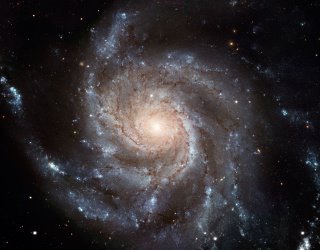 As some of you know i love space. It makes me feel very small. If you have not pondered the vastness of space and how small you are compared to it you need to. I may post on it soon. anyway hubble put forth this picture recently. I am facinated by the dots in the background which are more galazies of simular size to the one displayed in the foreground. after you look at it and comtemplate the idea, try to not run screaming from the room.
As some of you know i love space. It makes me feel very small. If you have not pondered the vastness of space and how small you are compared to it you need to. I may post on it soon. anyway hubble put forth this picture recently. I am facinated by the dots in the background which are more galazies of simular size to the one displayed in the foreground. after you look at it and comtemplate the idea, try to not run screaming from the room.Giant galaxies weren't assembled in a day. Neither was this Hubble Space Telescope image of the face-on spiral galaxy Messier 101 (M101). It is the largest and most detailed photo of a spiral galaxy that has ever been released from Hubble. The galaxy's portrait is actually composed of 51 individual Hubble exposures, in addition to elements from images from ground-based photos. The final composite image measures whopping 16,000 by 12,000 pixels.
The giant spiral disk of stars, dust, and gas is 170,000 light-years across or nearly twice the diameter of our galaxy, the Milky Way. M101 is estimated to contain at least one trillion stars. Approximately 100 billion of these stars could be like our Sun in terms of temperature and lifetime.The galaxy's spiral arms are sprinkled with large regions of star-forming nebulae. These nebulae are areas of intense star formation within giant molecular hydrogen clouds. Brilliant young clusters of hot, blue, newborn stars trace out the spiral arms. The disk of M101 is so thin that Hubble easily sees many more distant galaxies lying behind the galaxy.
